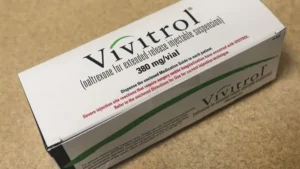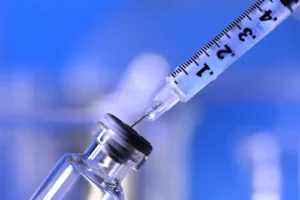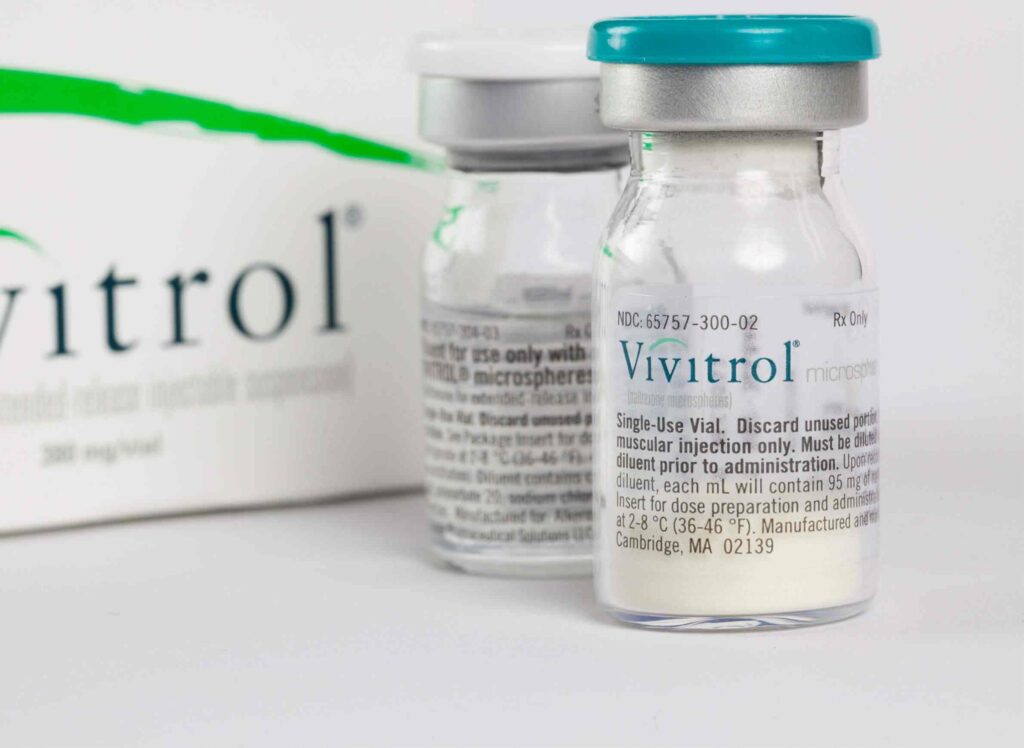Vivitrol, a brand name for naltrexone, is an injectable medication commonly used in the treatment of opioid and alcohol dependence. While it offers a vital lifeline for those in recovery, discontinuing its use can sometimes lead to withdrawal symptoms. This blog post aims to provide valuable insights into the Vivitrol withdrawal process, its symptoms, and how to navigate them safely and effectively.
Contents
What is Vivitrol?
 Vivitrol is a prescription medication used primarily to help prevent relapse in people who are recovering from addiction to opioids or alcohol. Its active ingredient, naltrexone, is an opioid antagonist, which means it works by blocking the euphoric effects and feelings of intoxication that lead to dependency. This helps to reduce cravings and the urge to use these substances.
Vivitrol is a prescription medication used primarily to help prevent relapse in people who are recovering from addiction to opioids or alcohol. Its active ingredient, naltrexone, is an opioid antagonist, which means it works by blocking the euphoric effects and feelings of intoxication that lead to dependency. This helps to reduce cravings and the urge to use these substances.
Administered as a once-monthly injection, Vivitrol is often chosen for its convenience and effectiveness as part of a comprehensive treatment plan. The use in treating addiction is based on its ability to disrupt the brain’s reward circuits, which are altered by substance abuse.
What Are The Long-Term Effects Of Vivitrol?
The long-term use of Vivitrol, generally considered safe when used as prescribed, is associated with several potential effects and considerations:
- Reduction in Substance Cravings and Relapse: One of the most significant long-term benefits of Vivitrol is its ability to help reduce cravings and the risk of relapse in individuals recovering from opioid or alcohol dependence. This can lead to sustained periods of abstinence and significantly improve the quality of life for those in recovery.
- Physical Health Impacts: While Vivitrol is non-addictive and does not cause physical dependence, long-term use can be associated with some health issues. These may include the potential for liver damage, particularly if there are pre-existing liver conditions.
- Psychological Health: Long-term use of Vivitrol can also influence psychological well-being. Some individuals may experience depressive symptoms or other mood changes. It’s important that patients are monitored for mental health symptoms and that these issues are addressed as part of a comprehensive treatment plan.
- Injection Site Reactions: Chronic use of injectable Vivitrol can lead to reactions at the site of injection, such as pain, swelling, and induration. These are generally mild but can be bothersome for some people over time.
- Impact on Pain Management: Since Vivitrol blocks opioid receptors, it can interfere with the effectiveness of opioid-based pain medications. This can complicate pain management for individuals who undergo surgery or suffer acute injuries during treatment.
- Potential for Reduced Opioid Tolerance: Long-term Vivitrol use can lead to a reduction in opioid tolerance. If a person relapses and uses the same amount of opioids they previously consumed, there is a heightened risk of overdose. Thus, it can be fatal.
These effects highlight the importance of careful monitoring and ongoing support when using Vivitrol as a treatment for addiction. Ultimately, ensuring that any adverse effects are managed effectively.
What Is The Process Of Vivitrol Withdrawal?
 The process of withdrawing from Vivitrol, or discontinuing its use, is generally less intense than withdrawal from opioids or alcohol because Vivitrol does not produce physical dependence. However, it does require careful management and planning.
The process of withdrawing from Vivitrol, or discontinuing its use, is generally less intense than withdrawal from opioids or alcohol because Vivitrol does not produce physical dependence. However, it does require careful management and planning.
Steps
Here’s an overview of the withdrawal process:
Consultation with a Healthcare Provider
The first step in discontinuing Vivitrol should always involve a consultation with a healthcare provider. This discussion should assess the reasons for stopping the medication, evaluate the current health status, and plan for ongoing support and treatment options if needed.
Gradual Transition
Unlike medications that require a tapering process, stopping Vivitrol doesn’t involve gradually reducing the dose since it’s administered as a monthly injection. However, the body may need time to adjust to the absence of the medication, particularly the brain’s opioid receptors, which will start to regain normal function.
Monitoring for Return of Cravings and Symptoms
After the last injection wears off, typically within 4 weeks, it’s important to monitor for the return of cravings or symptoms of the original dependency. The absence of Vivitrol can mean that the protective block on the euphoric effects of alcohol or opioids is no longer active, which may increase the temptation or risk of relapse.
Support and Therapy
Continuing or initiating support and therapy is crucial during this period. Counseling, support groups, or other forms of therapy can provide the necessary support to manage cravings and address the psychological aspects of addiction recovery.
Health Monitoring
Health should be monitored during this transition phase. Any psychological effects, such as depression or anxiety, or physical symptoms that emerge should be addressed promptly by healthcare professionals.
Developing a Long-Term Management Plan
Finally, developing a long-term plan to manage the risk of relapse is critical. This may include alternative medications, ongoing therapy, lifestyle changes, and strategies to manage stress and triggers.
Throughout the Vivitrol withdrawal process, the focus is on ensuring a safe transition and maintaining the gains made during treatment. The support of healthcare providers and a strong support network are essential to navigate this period effectively.
What Are The Self-Care Tips?
 When managing the transition off of medications like Vivitrol or simply maintaining sobriety and well-being, self-care plays a crucial role. Here are some essential self-care tips that can support individuals during this process:
When managing the transition off of medications like Vivitrol or simply maintaining sobriety and well-being, self-care plays a crucial role. Here are some essential self-care tips that can support individuals during this process:
1. Maintain a Healthy Routine
Establishing and sticking to a routine is beneficial. This includes consistent sleep patterns, eating nutritious meals at regular times, and setting aside time for relaxation and leisure activities.
2. Engage in Regular Exercise
Physical activity is a powerful tool in managing mental health and cravings. Exercise releases endorphins, improves mood, and reduces stress. Activities can range from walking or jogging to yoga or team sports, depending on personal preference.
3. Stay Connected with Supportive People
Social support is essential for maintaining sobriety. Stay connected with friends, family, or support groups who understand and support your recovery journey. Sharing your experiences and challenges can help reduce feelings of isolation and provide motivation.
4. Practice Mindfulness and Relaxation Techniques
Techniques such as meditation, deep breathing, or progressive muscle relaxation can help manage stress and emotional upheaval that might come with the withdrawal process. These practices can also improve focus and emotional resilience.
5. Pursue Hobbies and Interests
Engaging in hobbies or finding new interests can provide a sense of joy and fulfillment that was previously sought through substance use. Whether it’s art, music, cooking, or gardening, these activities can provide a healthy outlet for managing emotions and stress.
6. Monitor Mental Health
Pay attention to your mental health. If you experience signs of depression, anxiety, or other mental health issues, consider seeking professional help. Therapy can be a valuable tool in addressing these issues and developing coping strategies.
7. Avoid Triggers
Identify and avoid situations or people that trigger cravings or negative emotions. This might mean changing routines, avoiding certain social events, or communicating boundaries to friends and family.
8. Educate Yourself
Understanding the nature of your addiction and the recovery process can empower you. Knowledge about what to expect can help you manage symptoms more effectively and make informed decisions about your health.
9. Set Goals and Celebrate Milestones
Setting short and long-term goals can provide direction and motivation. Celebrate milestones in your recovery, no matter how small, to reinforce your progress and commitment.
10. Develop a Relapse Prevention Plan
Have a plan in place for how to handle cravings or relapse risks. Knowing in advance how to deal with these situations can make you feel more secure and less likely to succumb to old habits.
Incorporating these self-care tips into daily life not only supports withdrawal from Vivitrol but also fosters a sustainable and healthy recovery lifestyle.
Conclusion
Wrapping up, and navigating the journey of Vivitrol withdrawal requires understanding, preparation, and the right support. Whether you’re dealing with withdrawal symptoms or working on maintaining sobriety, the key is to incorporate healthy routines, stay connected with supportive networks, and practice self-care.
Remember, recovery is a personal journey, and each step taken toward overcoming addiction is a testament to strength and resilience. Embrace the support available, celebrate your progress, and keep focused on your long-term health and well-being.
